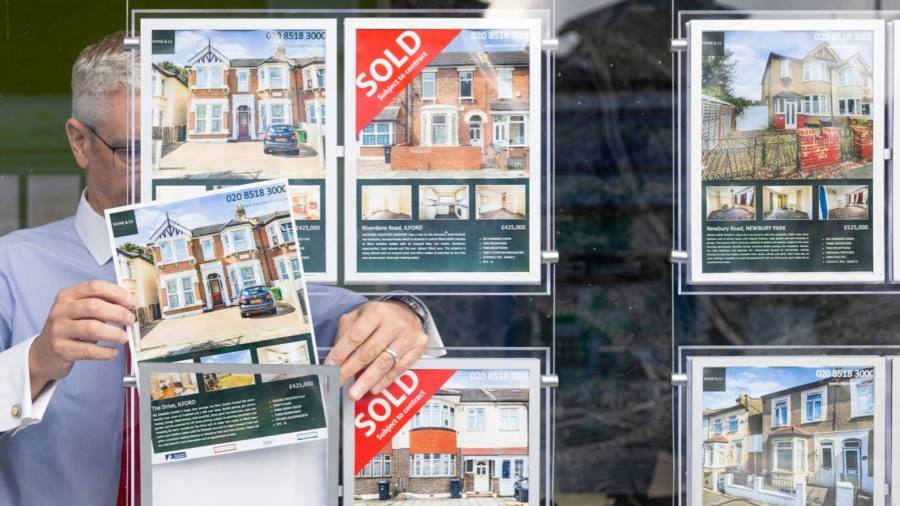
Homebuyers in England and Northern Ireland paid more in stamp duty in the three months to September than in any quarter on record, but property market analysts have warned the trend will go into reverse as house prices fall.
Stamp duty receipts on residential properties hit £3.59bn in the third quarter, beating the last quarterly record, set in the second quarter, by 21 per cent, according to government figures published on Tuesday.
In the year to September — a boom period characterised by high demand and soaring house prices — receipts exceeded £12bn. That is 28 per cent higher than their pre-pandemic 12-month high of £9.47bn set in 2017.
Lucian Cook, research director at estate agent Savills, said the rise had been driven by “very strong activity at the top end of the market”. There was a 35 per cent increase in purchases above £1mn in the third quarter compared with the same period in 2021.
Cook pointed to the contribution to the total made by buy-to-let and second-home purchasers, who are obliged to pay an extra three percentage points on stamp duty. This delivered £528mn to the Treasury in the period.
Stamp duty perks introduced by then chancellor Kwasi Kwarteng on September 23 were among the few elements of his ill-fated “mini” Budget to be spared the axe by his successor Jeremy Hunt.
Kwarteng doubled the threshold at which stamp duty would begin to apply in England and Northern Ireland to £250,000. First-time buyers were also exempted from paying the tax on the first £425,000 of their purchase, up from £300,000.
Cook said the disproportionate contribution of high-end purchases to the tax receipts partly explained the government’s willingness to leave the changes in place. “That was one of the reasons they were able to have a giveaway in the ‘mini’ Budget, and why they haven’t U-turned on it. Giving away at the bottom end is not massively expensive.”
The government figures did not break down tax receipts by price band, but Cook estimated almost 40 per cent of stamp duty takings in the third quarter were accounted for by £1mn-plus purchases, though they represented less than 5 per cent of transactions.
The Treasury faces a lower take from stamp duty in the coming months, however, as higher mortgage costs limit buyers’ aspirations, house prices come under pressure and transaction numbers are expected to shrink. In its forecasts this week, Savills said house prices would fall by 10 per cent next year and transactions by a quarter.
Roarie Scarisbrick, partner at buying agency Property Vision, said the market mood had rapidly cooled following the “mini” Budget, although there was still evidence of demand, particularly at the high end.
“Everybody is on edge. There are still transactions out there but I think everybody has sobered up very quickly when it comes to values and prices,” he said.